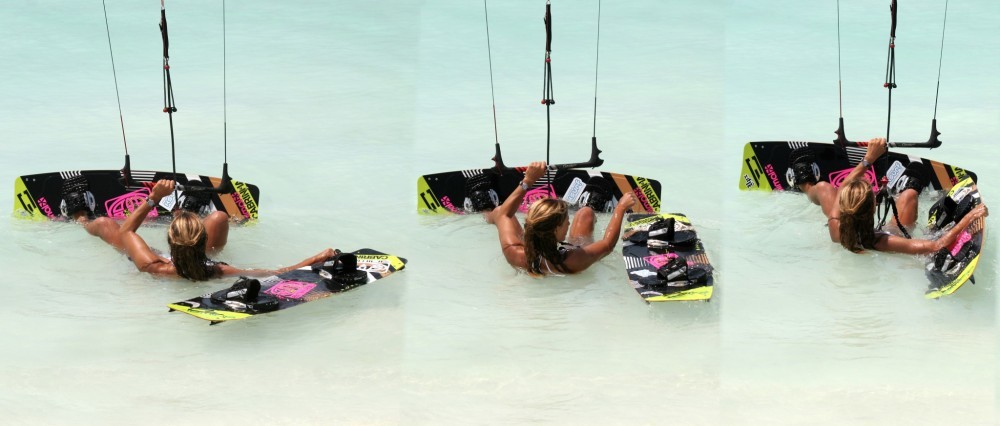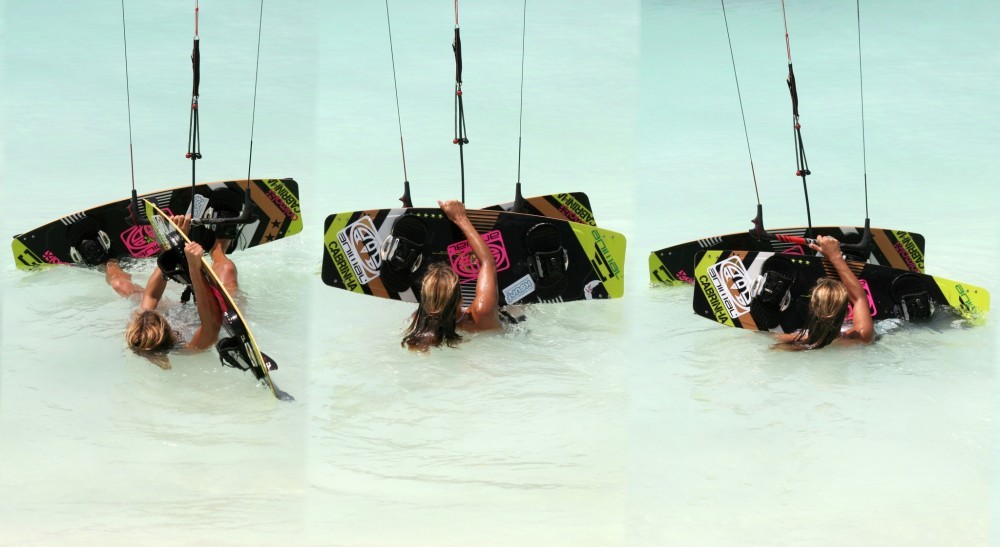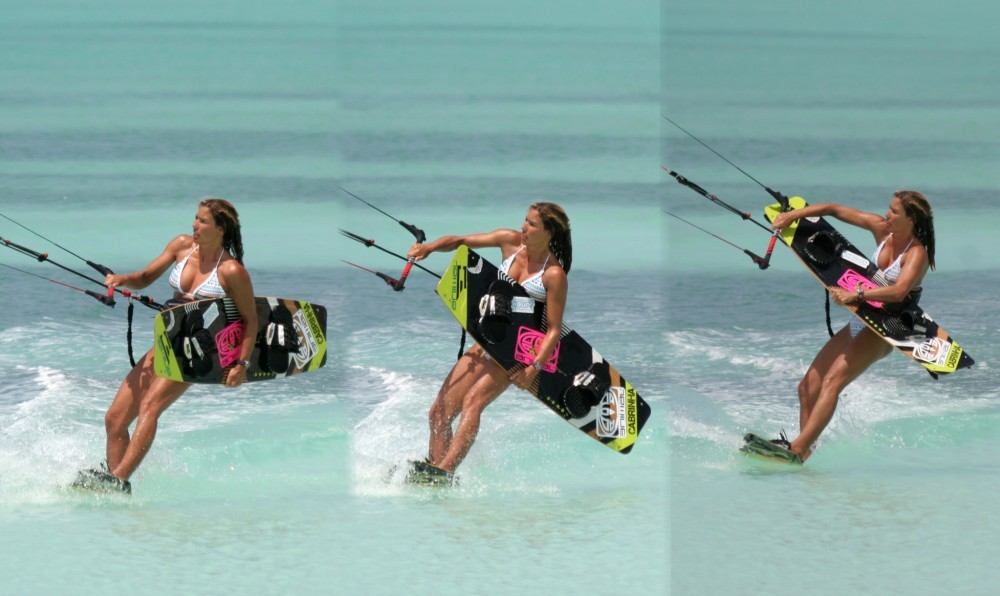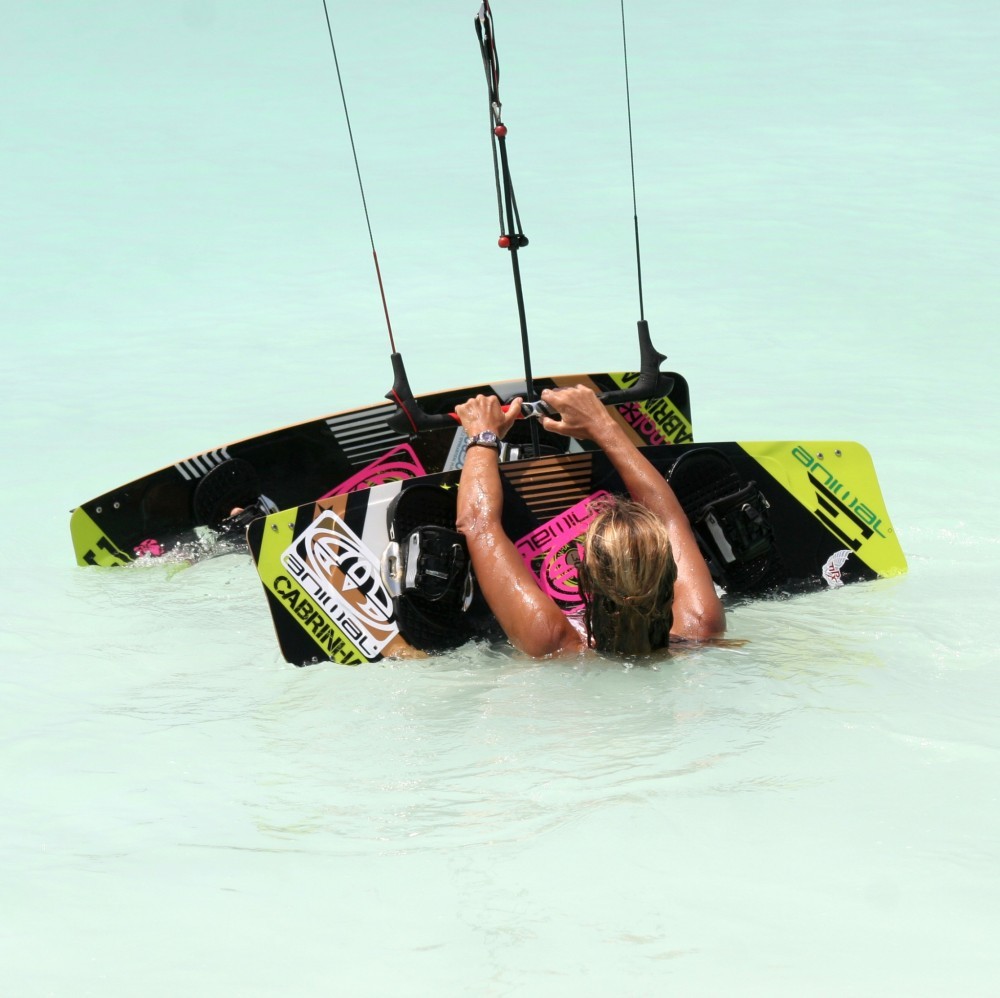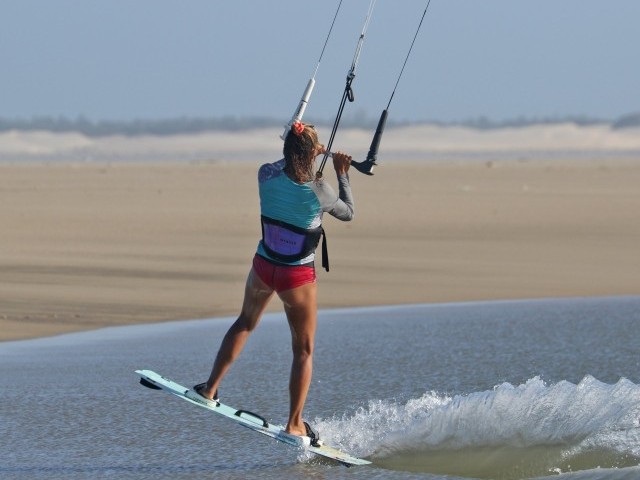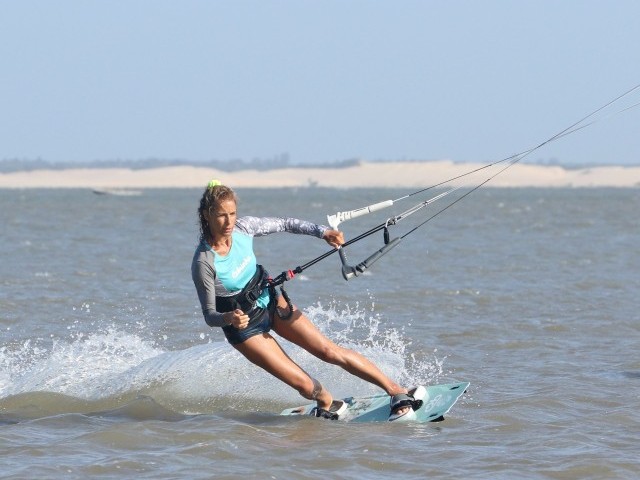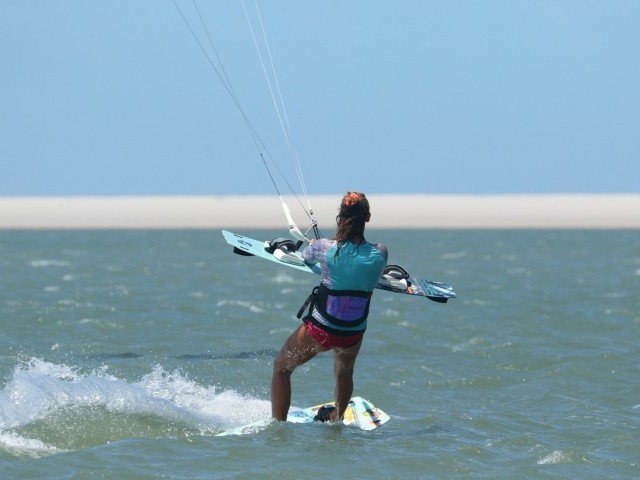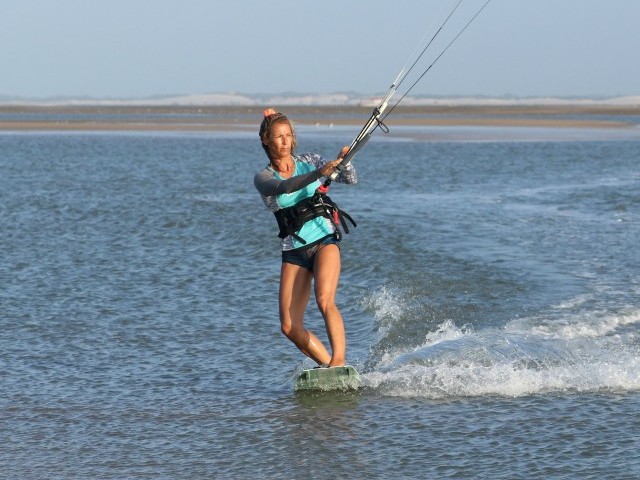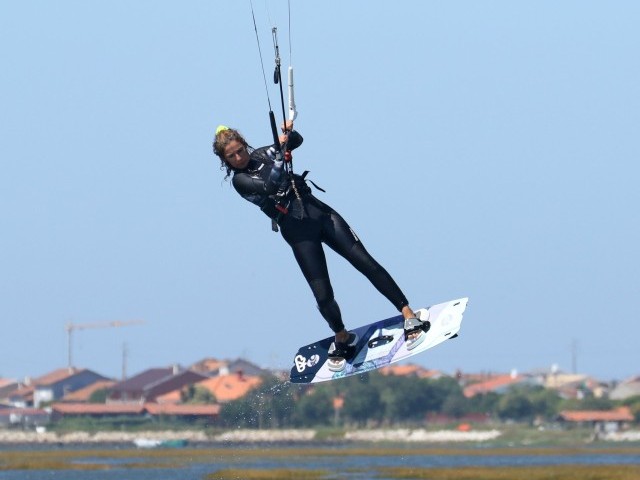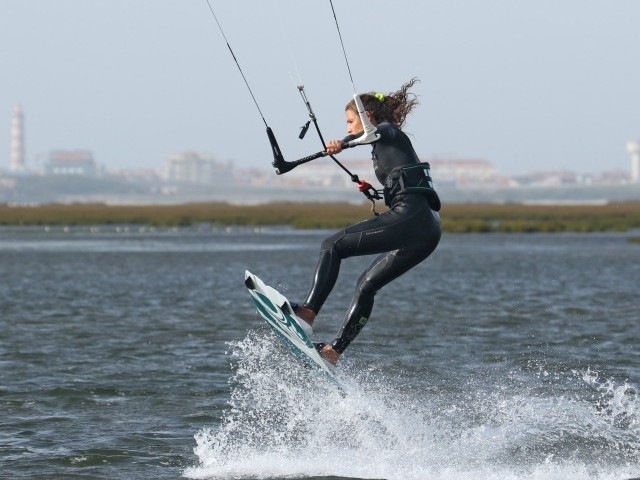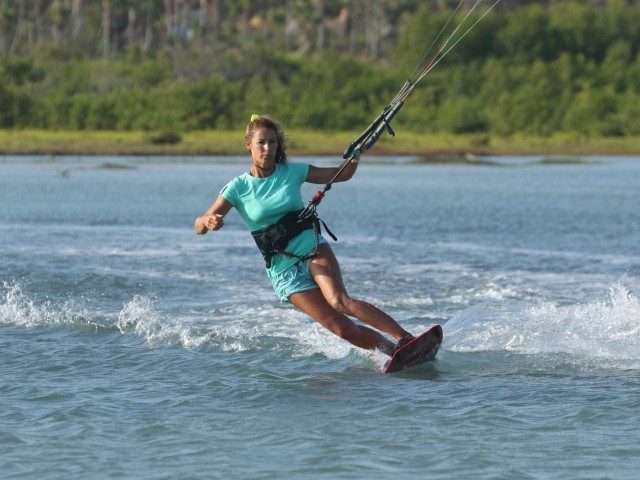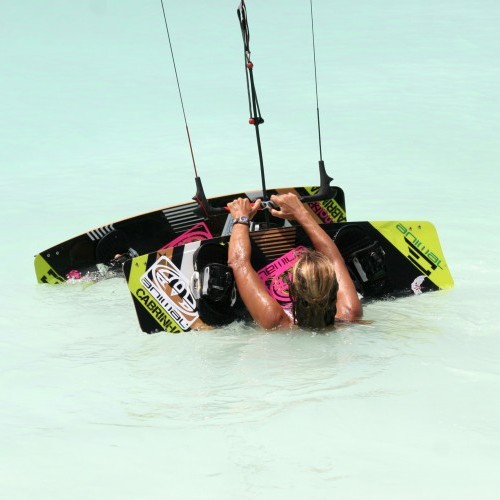
Deep Water Board Carry
Technique / Beginner
Introduction
We thought we’d include how to carry a board for a couple of reasons: firstly no end of kiters comment to us about how hard it is to carry a board now that so many people don’t use handles. Secondly it’s a bloody good way of keeping karma on your side, a bit like not eating Shark Empanadas, and we should all keep in mind the importance of helping each other out on the water when needs must.
There are essentially many different ways to carry a board. Some folk wear a reel leash purely for dragging boards, others casually loop their kite one-handed whilst carrying a board in their free hand. However the method we’ll be showing you now is probably the simplest if you have never carried someone else’s board, if you struggle to keep control of your kite whilst man-handling a board, or you don’t fancy looping your kite for whatever reason.
The added bonuses to this method are:
- The board doesn’t need a handle.
- You can keep a bow kite sheeted in and therefore ride even in light winds.
- Easy to kite in both directions and turn.
- You can sail upwind if the need be.
- Requires less physical strength as the centre line will take the boards weight.
- Little chance of dropping a sharp edged board onto your toes.
And to prove all of the above, Karine is demonstrating by carrying a big boy’s 136 x 42 whilst riding an 11m in somewhat underpowered conditions!
The First Goal
Your first goal is to get the desired lost board firmly yet safely in your grasp, just like Karine has in Pic A. Here she is in the perfect ready position to waterstart. As you’ll be doing this sitting down in the water, not whilst riding past the board, you’ll need no more skill than you use to get your own board on your feet, just the confidence to keep your kite flying at 12 o’clock with one hand on the bar. Have a look at Video 1.
To approach the board your best bet is to drop into the water on your behind just upwind of the board so that you can drift down onto it, otherwise you may overshoot it or end up downwind.
If you look at Sequence 1 from left to right, you can see that Karine has grabbed the board with her right hand. Ideally Karine would grab the footstrap nearest to her. However here, after stopping she has drifted down a bit so she has hold of the board by its edge. By doing this the board will still float over the surface and follow her rather than digging in and submarining. Once settled with the kite above her Karine pulls the board down towards her and as soon as it is next to her she gaps the edge furthest away from her and preferably as far in front of her as possible. Karine needs to hold this edge to enable her to lift the board over her chicken loop.
Following onto Sequence 2, also from left to right, Karine lifts the board in an effort to get it over her chicken loop. You can see in the first picture how she leans back to make room for the board. She keeps control of the kite with her left hand and by keeping the bar sheeted in, uses the lift from the kite to keep her head above the water. In the second picture you can see that she is holding the board with her right hand, whilst resting it on her body and left arm. Finally Karine releases the board from her right hand so that it can rest on the chicken loop and her knees, which are bent up underneath her. With the board now balanced she can grab the bar with her right hand and extract her left arm, bringing it back over the board so that she is in the ready position to water start.
Now have a look at Sequence 3 for a downwind perspective of getting the board in place. This time Karine has the board on her other side so she grabs it with her left hand. From this angle you can clearly see how she brings her knees up towards her chest. Which means that once she has lifted the board over her chicken loop and the centre line, she can now rest it on both of her legs and the centre line.
Moving Off
Making the effort to get the board over the chicken loop and centre line will now be worth the effort. Your aim whilst getting up and then riding is to pin the board down as in Video 2. If you think of the centre line as a pivot point, then it adds up that the board won’t move if you apply equal pressure down onto it with each arm. The beauty here is that so long as you push down with your arms, you don’t actually have to hold the board with your hands, which gives you the freedom of full control of your kite, making life a lot more pleasant.
However that said there are still a couple of obstacles to overcome. With the board pinned down under your arms you will not be able to really dive and work the kite, so you’ll need to think back to the early days of your kiting in order to generate enough power. The old load and launch! So if you intend to sail off to the right, rather than starting your down stroke at 12 o’clock, you’ll need to start with your kite to your left at 11.30 or 11 o’clock depending on wind strength.
Sequence 3 shows Karine comfortably water starting away from left to right, even with a pretty wide board pinned under her arms. Now we have no intention of teaching you how to water start again, but there are a few pointers to make life easier with a board in the way.
Looking at Karine’s bar throughout the sequence you can see how she doesn’t get much leverage on the down stroke, but we already have the solution to that as mentioned above. The greater problem is stopping the kite diving down into the water and getting it back up without an aggressive tug on the back hand. Anticipation is the key and the timing will depend on the size of kite you’re using. In the penultimate picture where Karine is just about up and onto her edge, you can see that she is already steering the kite back up, to make sure it will get back up there and give her the possibility of working it back down for some extra grunt. Once up and riding like this you should be able to ride to wherever you like with minimal fuss.
Dropping the Board
Assuming you are taking the board downwind to the rider who lost it, lets ponder where you should deliver it. Even if the other rider is aware you are coming with their board, he or she will hopefully have their kite in the air. This means that trying to get close to them to pass over the board could all end in tears and tangles. So your best bet is to kite past them and drop their board down wind of them. This way you’ll have little chance of getting too close and they will easily be able to drag downwind and reacquaint themselves with their beloved board.
If you’re new to this camaraderie your best bet for releasing their board is sail a good kite line’s length down wind of them, stop, drop down into the drink and then slide the board out from your arms so that its once again floating free. And finally sail away feeling smug that you’ve been such a good Samaritan.
If however you’re feeling confident and/or fancy getting a little closer to the hapless kiter you can follow the example in Sequence 5. Looking from right to left you can see how Karine has her kite around 10.30. Easily low enough to pass nearer to a stranded kite (should you trust their kite skills). The first thing Karine does is release her front hand and grab the centre of the board on the edge furthest from her. She can now sheet the bar out enough to slide the board out from under her back arm. With this grip she can simply let the board slide down to her side whilst kiting along. Once she is down wind of the chosen subject she can just drop the board and sail off in a rather nonchalant manner. This board dropping technique is a firm favourite amongst male riders helping out female kiters who lost their board just a few metres back!
Hopefully that all makes sense? We are not going to go through any common problems here, as it is just a matter of doing it and feeling comfortable and safe.
This technique article was in Issue 20 of IKSURFMAG.
Related
By Christian and Karine
Christian and Karine have been working together as a coaching team, running improver to advanced kitesurfing clinics since 2003.






